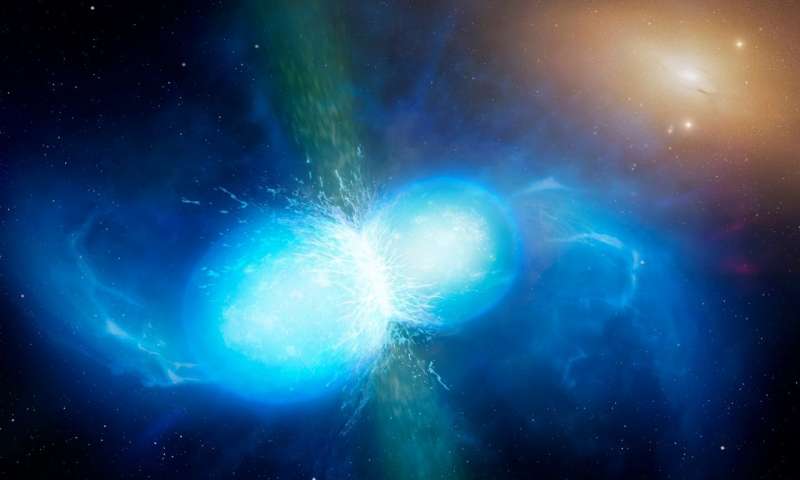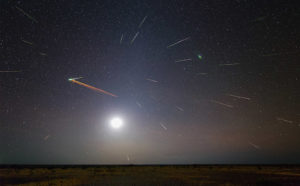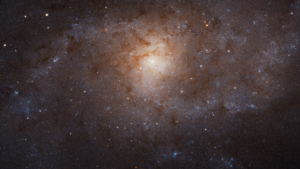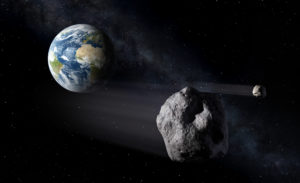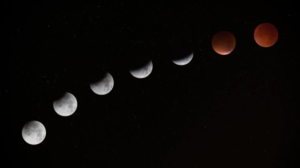Amalgamating neutron stars chemistry. For the initial time, astronomers have recognized a chemical element that was newly composed by the amalgamation of two neutron stars. The fundamental procedure known as r-process also known as speedy neutron apprehension is contemplated to be the source of an extensive aggregate of elements weightier than iron.
This discovery casts contemporary light on the enigma of the environments in which this r-process occurs. The conglomeration of astronomers involving scientists of FAIR and GSI has now tangibly indicated that the blending of two neutron stars generates the circumstances for this procedure and behaves as reactors in which contemporary elements are procreated.
The source of weighty elements like gold, lead, and uranium has not yet been totally refined. The light weighted elements, hydrogen, and helium were already devised in noteworthy aggregates with the Big Bang. Nuclear fusion in the nucleus of the stars is also the well-found origin of atoms in the abundant gamut from helium to iron.
For the manufacturing of weightier atoms, scientists doubt a procedure that connects unbound neutrons to already prevailing building blocks. The speedy alternative of this procedure is the much-harped r-process or fast neutron capture. Currently, research is being executed to regulate which objects might be sites where the reaction occurs. Feasible applicants till now are an unusual kind of supernova detonation and amalgamation of opaque stellar remainders like binary neutron stars.
An international group of astronomers with considerable involvement of Camilla Juul Hansen from the Max Planck Institute for Astronomy (MPIA) has now found the trademark of the element strontium which was composed by the r-process in the course of volatile fusion of two neutron stars.
Steve Lopez is the Editorial Page Editor for News Raise. He covers Health. He has won more than a dozen national journalism awards for his reporting and column writing at seven newspapers and four news magazines.
